First look at Marvel Universe exhibit in Charlotte museum offers comics, culture, costumes
In what is likely the largest exhibition Discovery Place Science has ever hosted – certainly the biggest of this century – human imagination is cast across galactic realms, rival universes and unbound dimensions, all conjured from a wee pencil tip.
“Marvel: Universe of Super Heroes” opens Sunday, May 14, and tracks the history of fictional mutants from their lowly roots in pulp comics to cinematic glory and pop culture iconography.
All the gang is here from Marvel (and even a few competing universes): Captain America, Spider-Man, Iron Man, Black Panther, Human Torch, Wolverine, the Hulk, Thor, Daredevil, Captain Marvel and more.
So are their tribes: Fantastic Four, X-Men, Avengers and Guardians of the Galaxy. Green Goblin, Magneto and a murderer’s row of villains lurk in the shadows.
With an exceptionally sharp thread of narrative at each turn, the exhibit should even appeal to superhero agnostics. Visitors weave through an immersive soundscape from Depression-era pulp to Hollywood grandeur to video-game evolution to the creative incubator of Disney+.
Discovery Place considers “Marvel” a blockbuster exhibition, a once-in-every-three-years show with rare artifacts and broad appeal, says Heather Norton, chief science officer and longtime superhero fan. At 12,000 square feet in a vast, new gallery on the North Tryon Street side of the museum, the exhibit far exceeds any in memory.
“Shows are getting bigger,” says Norton. “New shows are demanding this kind of space.”
Just a casual stroll through the Marvel labyrinth should take no less than 30 minutes. A dedicated fan should budget three hours. Tickets are timed to admit 50 guests every 15 minutes, Norton says, to avoid backups within.
This is the exhibition’s last stop in the U.S., as well as the only one in the Southeast, before it heads to Europe, according to Discovery Place.
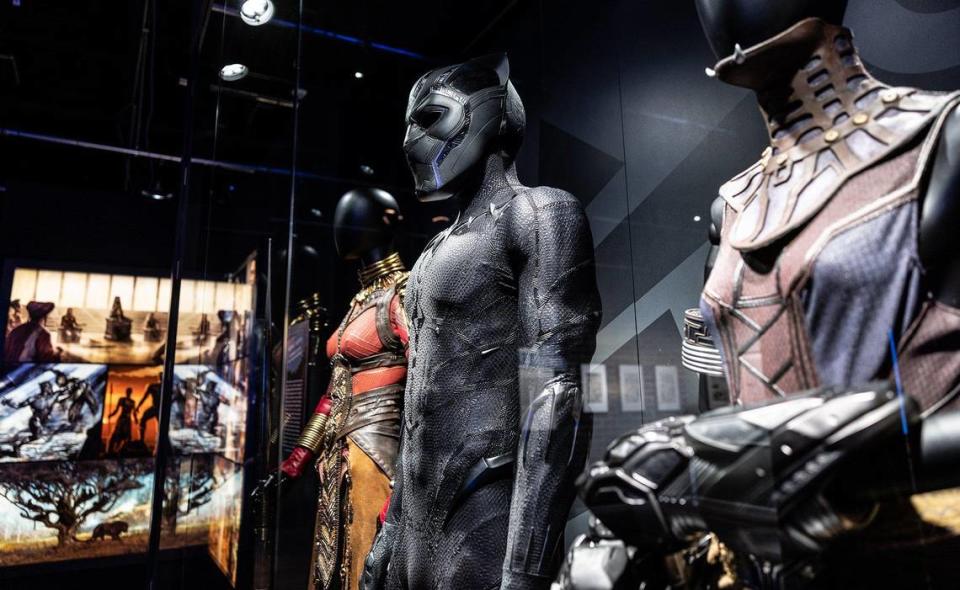
Marvel’s ups and downs
A year after Superman took flight in 1938 for rival Action Comics, Marvel’s universe spun up.
In issue No. 1, good guy Human Torch fought villain Namor the Sub-Mariner. Their air-and-sea tangle steam-rolled the newsstands, selling nearly 900,000 copies at a dime apiece.
Captain America arrived on the eve of World War II. He would famously punch Adolf Hitler in the face and sell a million copies doing it.
Characters like the Whizzer, Miss America and the Destroyer followed, but none matched the success of the earlier figures, the exhibition explains. After the war, superhero comics went into a slump until Marvel creators Stan Lee and Jack Kirby — revered industry geniuses — gave the cast a psychological overhaul.
In 1961, with Cold War tensions rising, they unleashed Marvel’s first super squad, the Fantastic Four. It featured Mister Fantastic who could stretch like rubber, the Invisible Woman, the Human Torch and the monstrous Thing.
Rather than rigid straight-shooters of earlier molds, the Four were a slightly dysfunctional family, quarreling, sulking and otherwise showing all-too human foibles while forging an enduring friendship.
It appealed to a new audience — grown-ups — and sparked the resurgence of Marvel.
In 1963, the formula was applied to the Amazing Spider-Man, Marvel’s most successful line. Insecure Peter Parker had to negotiate cruel high school society while learning to use his secret powers responsibly.
Marvel’s conflicted and complicated psyches have proven relatable to huge audiences ever since.
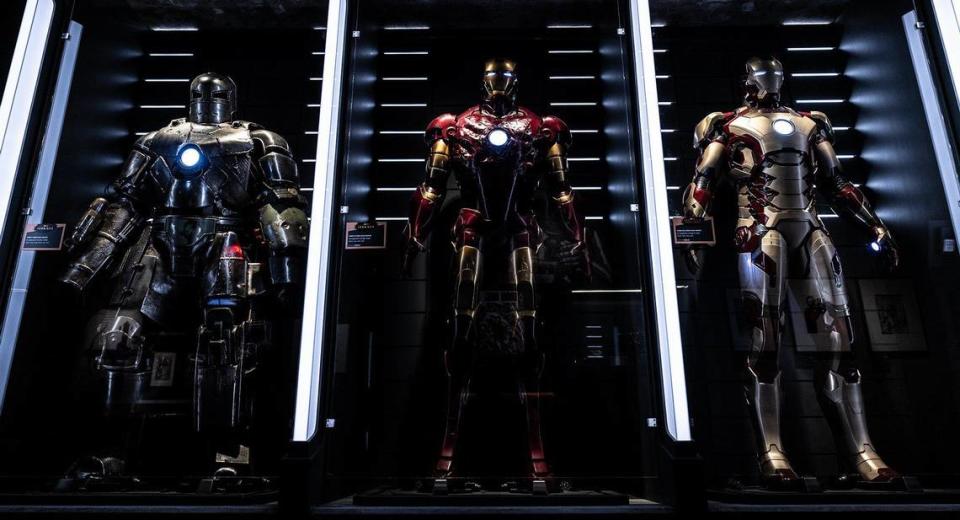
Breaking barriers
Marvel also focused on relevance to social change. It grew more inclusive with the introduction in 1966 of the Black Panther, T’Challa, king and protector of the African techno-paradise of Wakanda. He was the first African protagonist in superhero ranks.
Among the exhibit’s rare artifacts are original Black Panther drawings by Billy Graham (he called himself “the irreverent Billy Graham” to distinguish himself from the famous evangelist), the first Black artist to sketch the character.
To reflect contemporary society, Marvel took storylines from civil rights, political scandals, gender conflicts, the martial arts craze and even the rise of disco. In the 1970s, it unleashed The Punisher, a morally ambiguous crimefighter based on Clint Eastwood’s character Dirty Harry.
That was also the decade for the first Asian superhero, Shang-Chi, a martial-arts master based on Bruce Lee. In 2013, Marvel released its latest Ms. Marvel incarnation with a character named Kamala Khan, the first Muslim superhero.
At the exhibit, there’s another nod to current culture: you can snap a selfie beside Khan’s outsize fist or with other characters including an inverted Spider-Man or a grumpy, lumpy Thing.
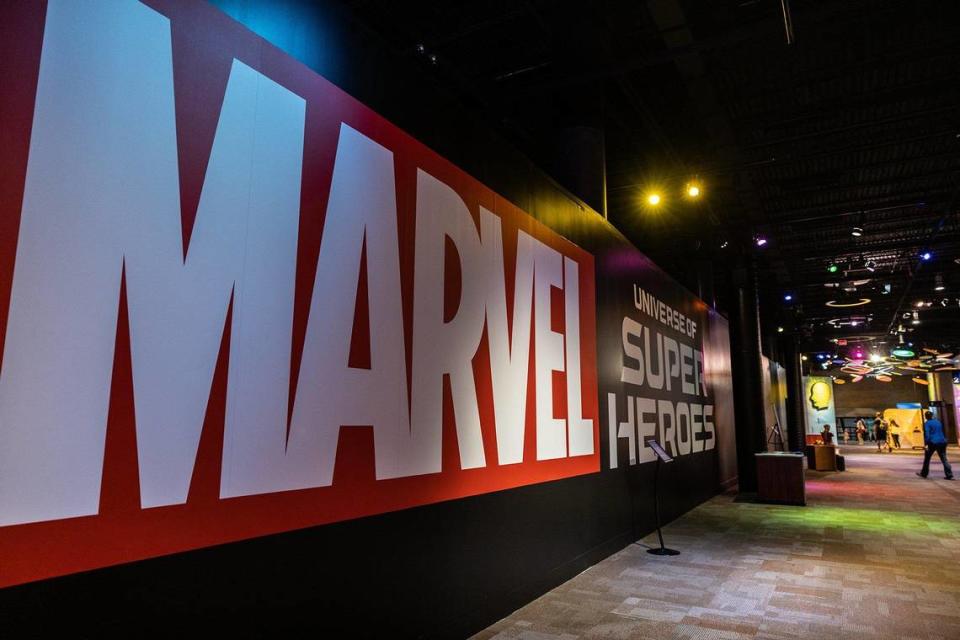
Marvel’s lucky break
One aside in the exhibition examines a war on comics in the 1950s. Critics, largely citing horror and gangster pulps, led a movement arguing that comics were corrupting children.
After a congressional hearing in 1954 on juvenile delinquency, the comics industry adopted a code. Among the commandments: clothing must resemble attire acceptable in society, good shall always triumph over evil and proper grammar must be used.
“There would be no Marvel Comics without that happening,” says Ben Saunders, professor of English at the University of Oregon at Eugene and one of the co-curators of “Marvel.”
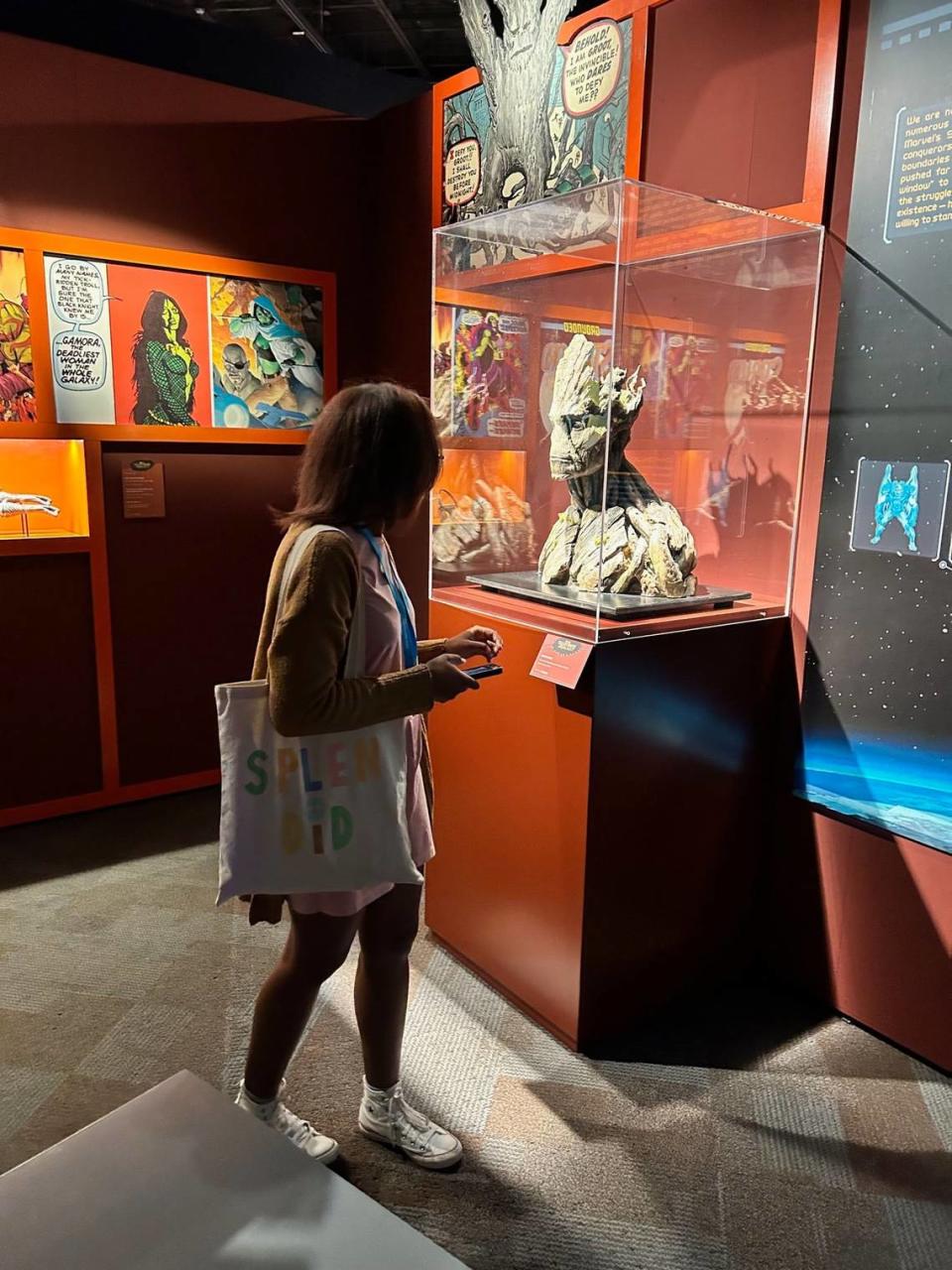
While pulps mired in violence and crime were throttled by the code, Marvel’s super cohorts, led by Captain America, were already spinning tales that played on patriotic themes and showed the nation at its best. Marvel prospered, others withered.
Saunders, a native of Wales who spent his first night in America in Durham as a new PhD student at Duke University, was an avid fan of American comics as a boy and says they helped teach him to read.
“Then I became a professor of literature,” he says, “so clearly they’re bad for you.”
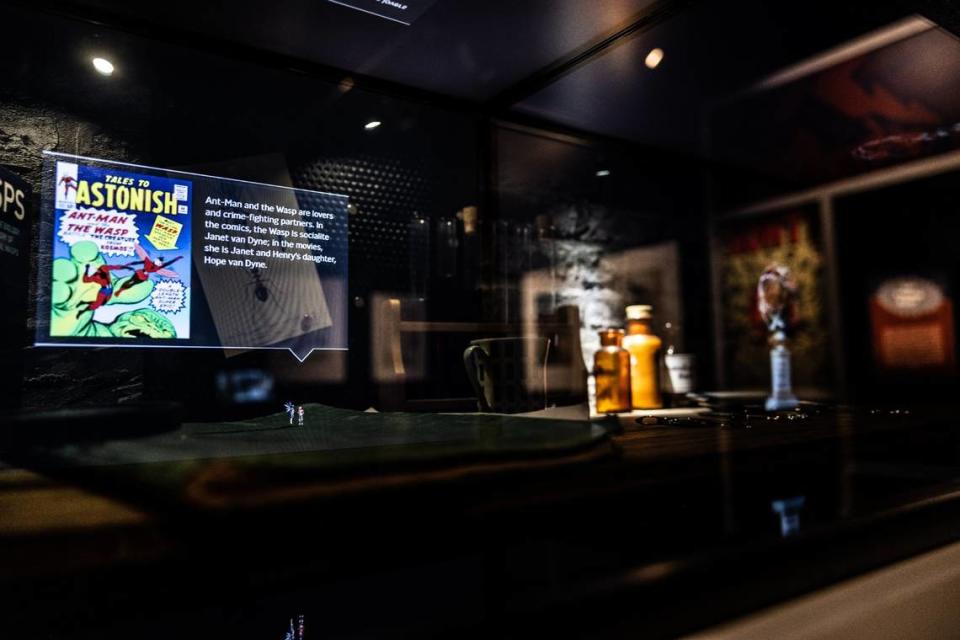
So little remains of Marvel archives
One problem in building the exhibition was that Marvel long ignored its archives. For decades, original art and file issues were haphazardly stored, if at all.
Of the 300 original artifacts on display, many had to be borrowed from avid collectors. Among them is the holy grail for comic connoisseurs, Saunders says, a pristine, only-known original copy of Marvel No. 1 featuring Sub-Mariner and the Human Torch. It’s from August 1939, and worth an estimated $500,000 or more.
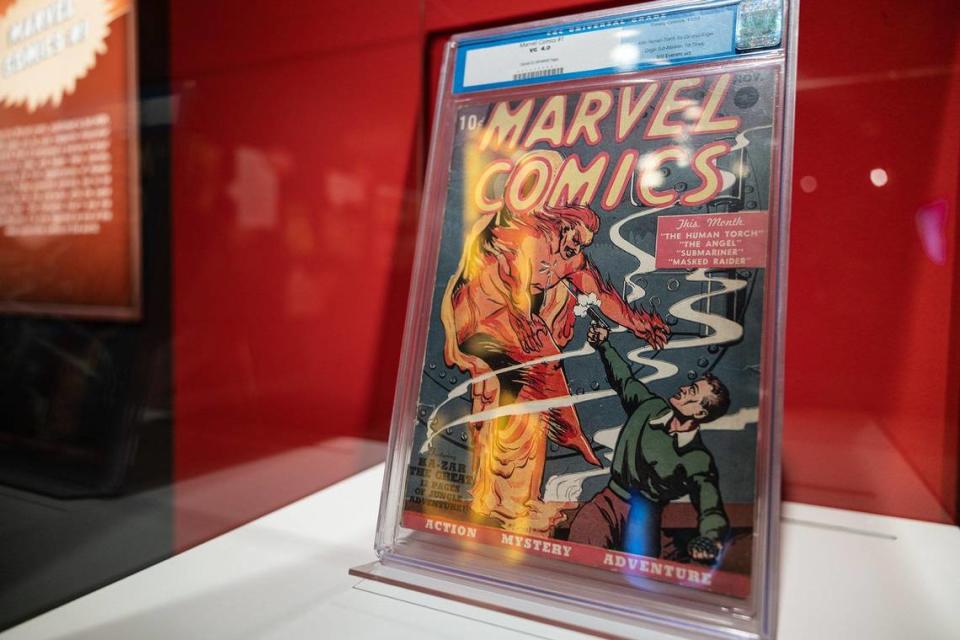
Better kept were Hollywood costumes of various Marvel heroes.
On display is the one Chadwick Boseman wore in the Black Panther movie while battling his own deadly enemy, colon cancer.
Three Iron Man costumes show the evolution of the character from bulky robotic armor in 2008 to sleek form-fit in 2013. Captain America’s huge wardrobe likewise reflects the cut of the decades.
Is Marvel an odd fit for science museum?
Is “Marvel” in the right museum?
With its focus on design, art, graphics, social themes and modern media, “Marvel” seems like it would be just as comfy a few blocks south at the Mint Museum for visual arts.
No, says Norton, Discovery Place’s science officer. It’s right where it belongs.
“There is so much STEM and science in the comic book world,” she says. “We can tease a lot of science out of pop culture.”
Many of the characters were scientists who were mutated by error, she says. Others live in parallel universes, something astrophysicists conjecture about. Black Panther’s Wakanda was a futuristic land where new tech and modes of transport were always under development.
“This idea that the arts and science are somehow different is idiotic,” says Patrick A. Reed, a New York-based pop culture historian and co-curator of “Marvel.”
“I’ve never known a scientist who didn’t like the arts. It is only in the imagination where discovery happens.”
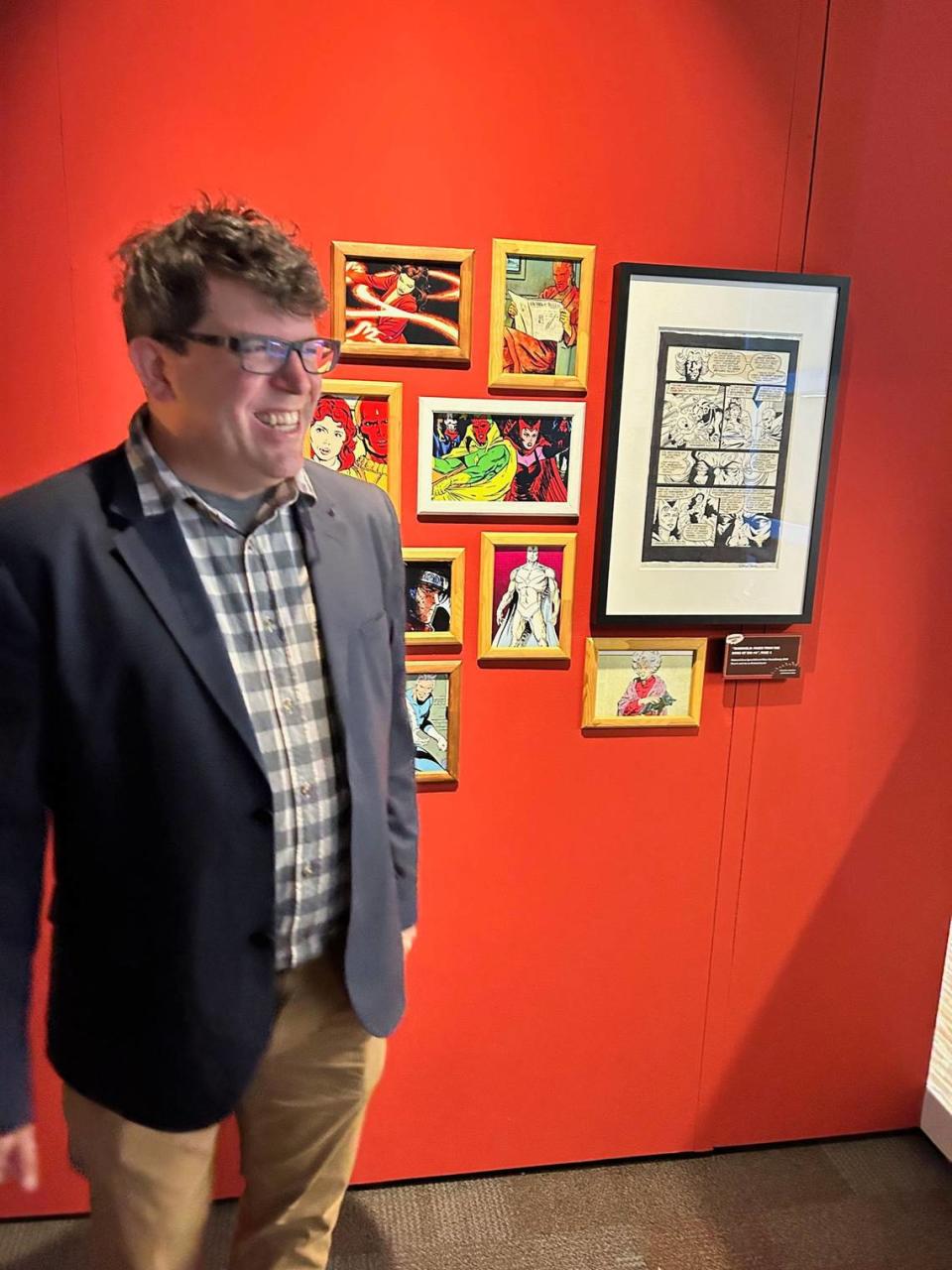
“Marvel: Universe of Super Heroes”
Where: Discovery Place Science, 301 N. Tryon St., Charlotte
When: May 14 – Sept. 4
Ticket info: Timed tickets must be purchased at DiscoveryPlace.org.
Costs: Adults: $44; Children: $39; Seniors: $41
Questions: 704-372-6261
Evening visits: Discovery Place Science will host “Marvel After Hours” on select Thursday, Friday and Saturday evenings, 5 p.m. to 9 p.m., $35 general admission or $20 for museum members
More arts coverage
Want to see more stories like this? Sign up here for our free “Inside Charlotte Arts” newsletter: charlotteobserver.com/newsletters. And you can join our Facebook group, “Inside Charlotte Arts,” by going here: facebook.com/groups/insidecharlottearts.

